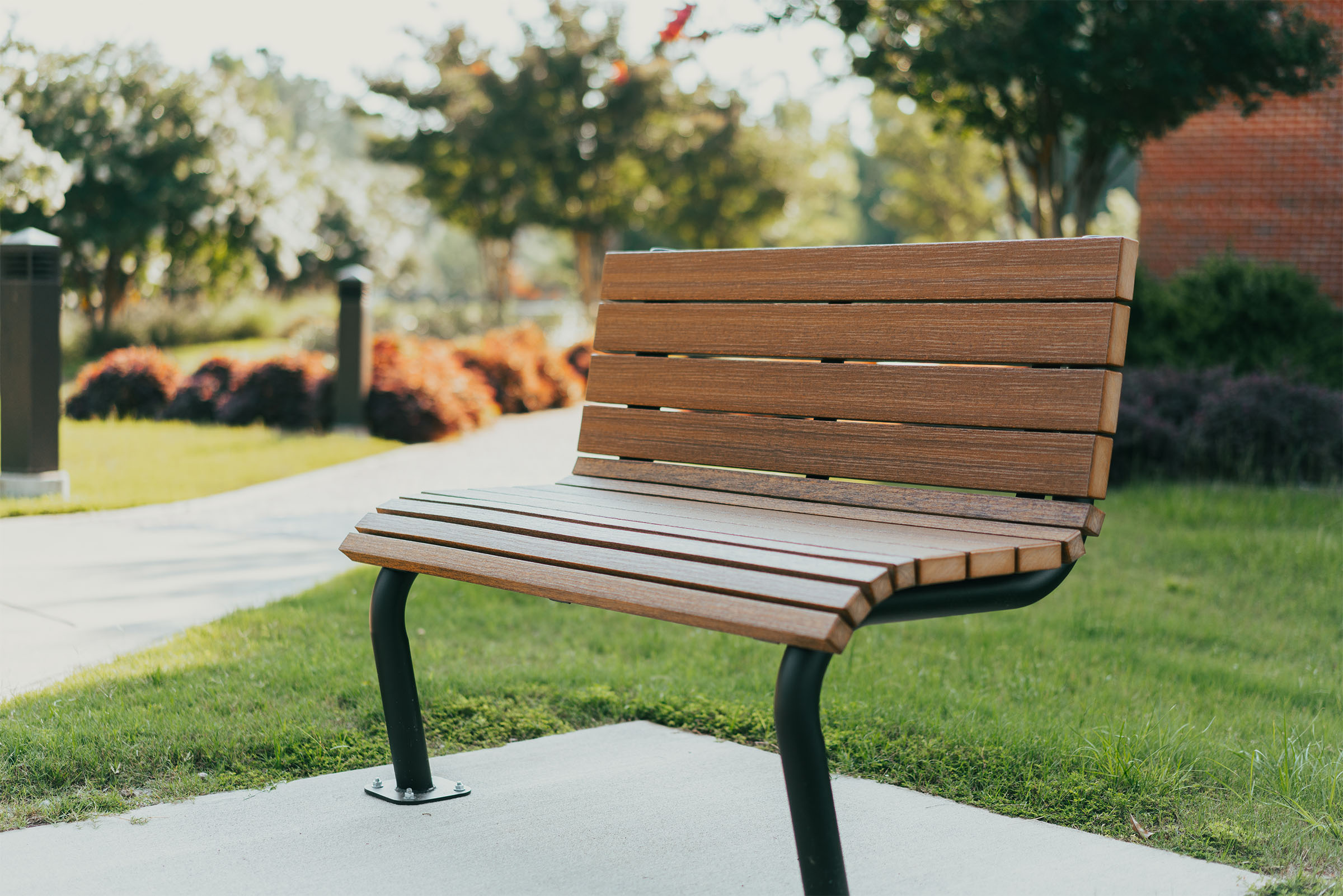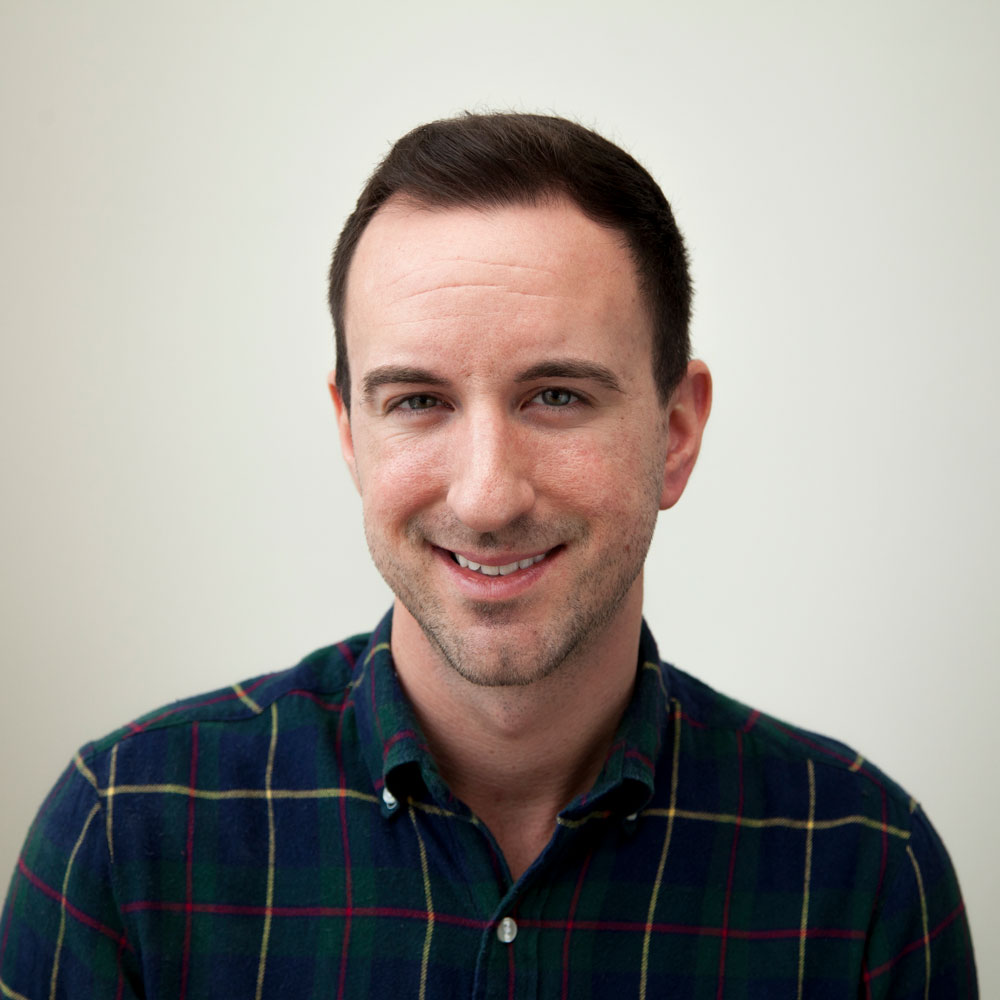Story at a glance:
- PlayCore Studio class at Auburn University brings a philosophy of playfulness to the design of outdoor spaces.
- PlayCore Studio students design outdoor spaces with site furnishings and park amenities. A recent student project was brought to life by PlayCore’s UltraSite division.
- A new student-designed collection is made almost entirely from recycled materials.
The COVID-19 pandemic has made us rethink the ways in which we work, play, and interact with one another in dramatic ways. One of the most noticeable changes in our collective behavior is our renewed appreciation for outdoor spaces, which for the past year have been some of the only places where people can safely gather together. Whether it was meeting friends in the park for a birthday celebration, taking an exercise class, or getting together with coworkers to collaborate in person, most of us can likely recall spending more time outdoors since early 2020.
In fact, park usage is up nearly 40% since before the pandemic, according to Tom Norquist, senior vice president of Innovation at PlayCore, a leading recreational facilities and services company based in Chattanooga, Tennessee.
“It’s a very positive thing for the health and wellness of society to get everyone rejuvenated outdoors,” Norquist says. “There are currently some really exciting trends in the field of outdoor recreation—whether it’s with fitness parks, outdoor educational opportunities, or new ways to spend our workday.”
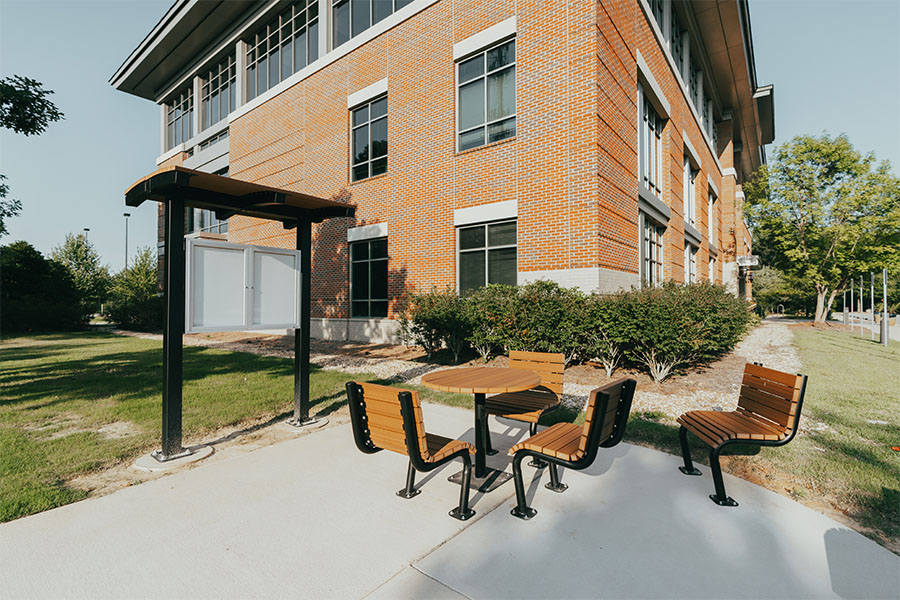
Photo courtesy of UltraSite
Today students of design and architecture are learning how to curate exterior spaces for this expanded roster of use cases. At Auburn University’s College of Architecture, Design and Construction, for example, Norquist teaches a class called PlayCore Studio, where students get firsthand experience designing outdoor spaces with site furnishings and park amenities. During a recent semester, one student’s project was actually taken from the conceptual stage and manufactured by UltraSite—a division of PlayCore that makes high-quality outdoor recreation products—and installed at the research park adjacent to the university.
“The goal for the students was to design a space that gets individuals out of their offices and into the outdoors to help improve the quality of their work,” Norquist says. “Forward-thinking developers are really looking at ways to configure their spaces to allow for more time outdoors.”
What is PlayCore Studio?
PlayCore Studio, which has operated at Auburn since 2005, is structured to give students the feel of working at a real-life design firm. It’s an innovative arrangement: Norquist acts as the firm’s CEO, focusing on sales and marketing, while his partner, professor Tin-Man Lau, manages operations. The students—who work as the firm’s staff—develop concepts to pitch to the client, which in this case is PlayCore.
“What’s special about this studio method is that it’s treated as a real-world experience,” Norquist says. “Having students pitch their concepts teaches them presentation skills, while we also teach them how to think about branding themselves. That’s on top of the design aspect, of course.”
Students of the studio were introduced to the foundational themes of exterior design and took part in an immersive course that included tours of one of PlayCore’s manufacturing facilities. This hands-on experience was complemented by classroom lessons that covered everything from the various materials used to build recreational amenities and facilities to the newest breakthroughs in shade innovation.
The Student-Designed Denali Series
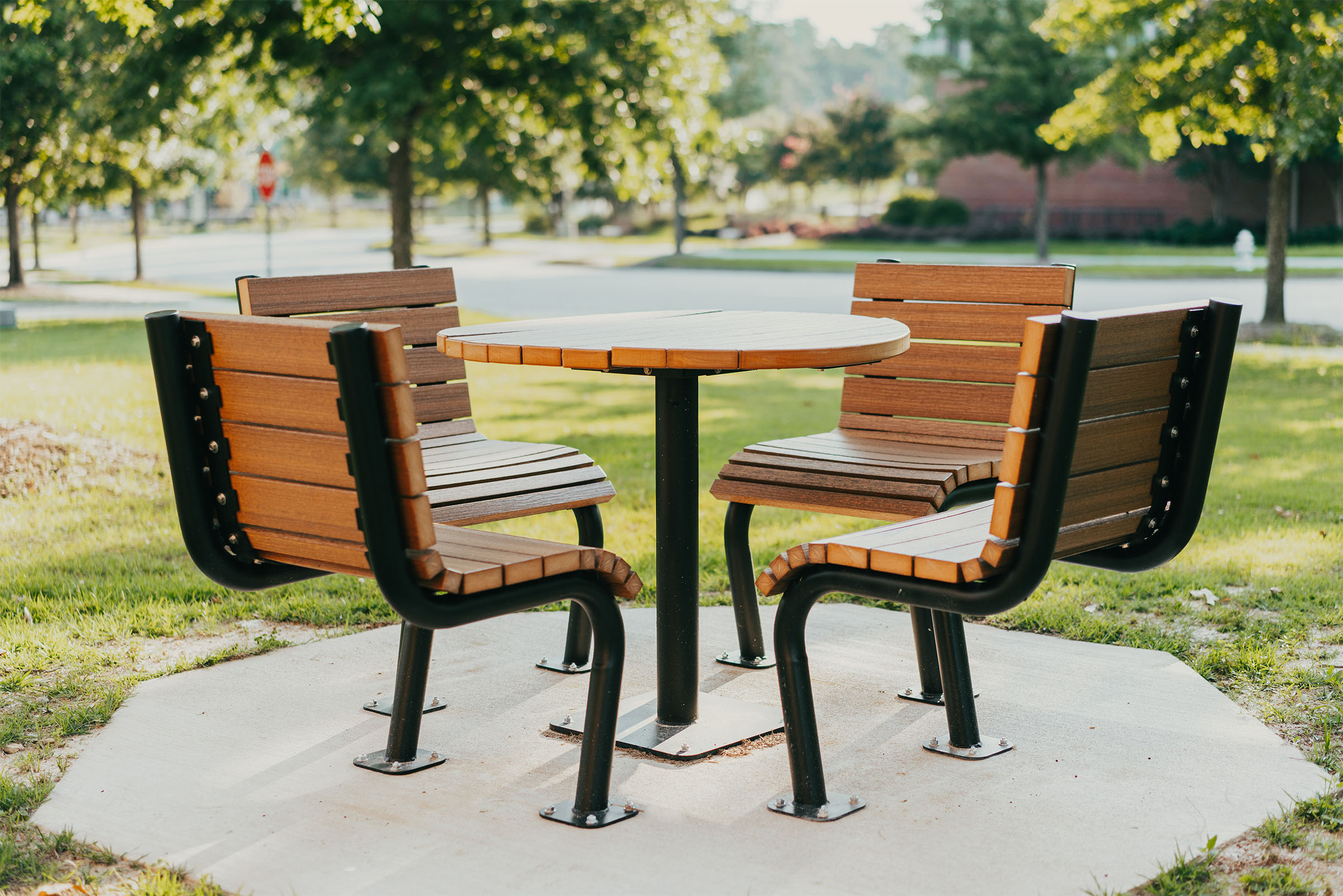
Photo courtesy of UltraSite
The concept that was installed at Auburn’s research park is called the Denali Series, and it was designed by Auburn student Christine Lakeman. The collection of outdoor site amenities features a number of seating arrangements centered around circular tables as well as park benches, all with a free-floating, modern design.
The angular chairs are both comfortable and stylish, with the steel front legs secured into the concrete underneath while the back of the seat is cantilevered over open space. This not only gives the series a graceful, minimalist feel but also makes the seating ADA accessible. The installation at The Park—as Auburn’s research campus is called—also includes an outdoor office kiosk and whiteboard to facilitate brainstorming and collaboration sessions for the workers of the nearby office buildings.
Sustainability
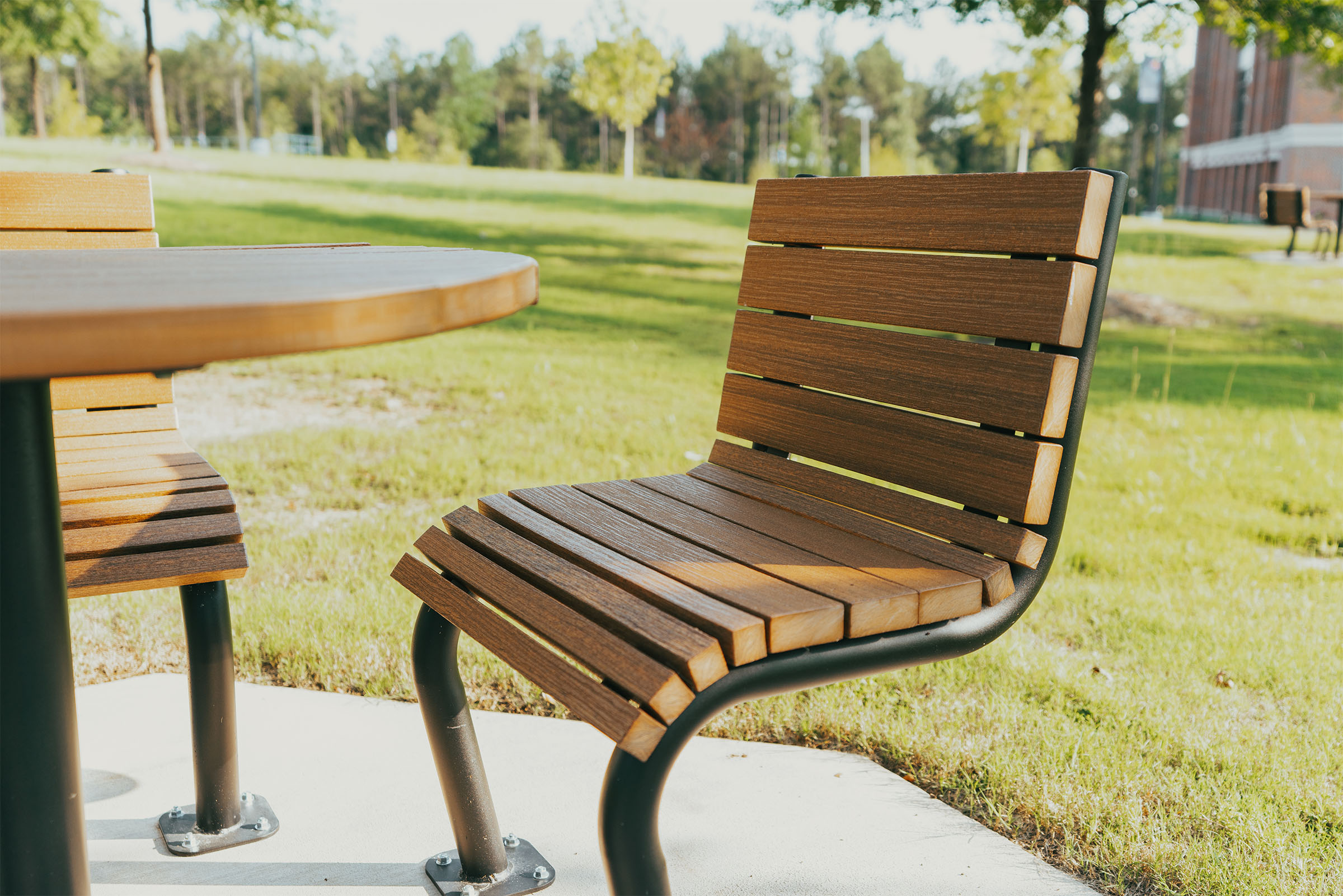
Photo courtesy of UltraSite
Form and function were important to the execution of the Denali Series, of course, but so was environmental sustainability. The entire collection is made from recycled materials, with the small exception of the stainless steel hardware such as screws and bolts. The surfaces of the chairs, benches, and tabletops look and feel just like wood, with the sheared edges of the planks revealing highly realistic extruded grain, but the material is actually high-quality recycled plastic.
“Sustainability is top of mind for everything we do, so we wanted to work with materials that are recyclable but also recycled themselves,” Norquist says, noting that the steel UltraSite uses in the structural elements of its products are, on average, more than 60% recycled. “We know we only have one Earth and we don’t want to be the people filling up landfills, so we’re very conscientious about how we can do our part to keep it pristine.”
The Objective
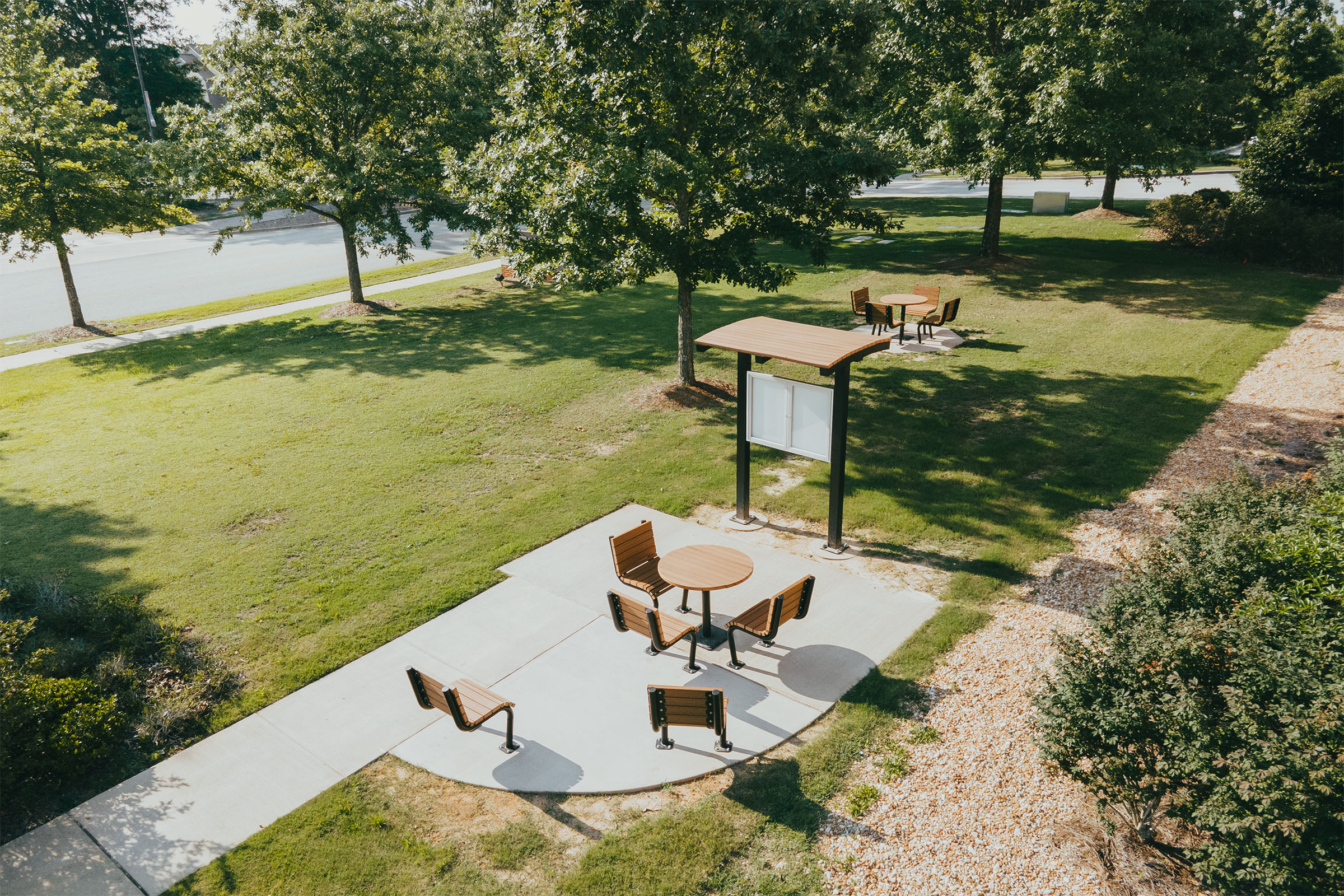
Photo courtesy of UltraSite
During the design stage of the project, Norquist and his students met with and interviewed employees as well as the management team at The Park in order to better understand their needs and desires for an outdoor workspace. The tenants of the research park then took a vote and chose the Denali Series to build onsite.
“The tenants wanted an outdoor therapeutic experience during the workday,” Norquist says. “These types of outdoor amenities really help with that.”
From there the UltraSite team took the design drafts and collaborated closely with Norquist’s class, using their expertise in manufacturing efficiencies to turn the student’s concept into reality. The recreational amenities were then built at UltraSite’s manufacturing facility in Red Bud, Illinois. “I knew my students would be in great hands with UltraSite’s team of experts,” Norquist says.
Site Furnishings You Can Buy

Photo courtesy of UltraSite
And while The Park represents the first purchase order for the Denali Series, the collection will be available for sale to the general public starting in January 2022.
Like many of UltraSite’s products, the Denali Series will be marketed to landscape architects and park districts as well as developers of multi-family residential and commercial spaces. And, given the success of the collection at Auburn, universities will also be a target market.
Why Healthy Design?
The iterative process in Norquist’s studio that resulted in the Denali Series is representative of PlayCore’s overall philosophy. The company spends a tremendous amount of time on research and development, and focuses on the discovery phase when working on a new suite of products to better understand the function and pain points of its users and operators.
“We operate on the exact opposite of the, ‘If you build it, they’ll come’ mentality,” Norquist says. “Our goal is to build healthy communities through play and recreation in outdoor spaces. It needs to be holistic.”
An important part of PlayCore and UltraSite’s approach to designing public spaces is to create them in an equitable manner by gathering community input, which creates a sense of ownership. This includes a focus on universal and inclusive design that is naturally multi-generational. “We want spaces where everyone can participate in play,” Norquist says.
Norquist—who has 38 years of experience in the outdoor recreation market—has a deep appreciation for the physical and mental health benefits of what he calls “play.” He explains in detail how the frontal cortex of the human brain requires times of rest from stress and overthinking, and that, even as adults, we need to spend more time in a “free state of play,” which produces natural, beneficial chemicals like dopamine and serotonin.
“It was during my early years in the industry that I started to learn that play was not just a release of energy for children, or something to have fun with, but that it has purpose,” Norquist says. “Part of what I teach my class is, there is a side to play and recreation that is intrinsically motivating to all human beings. And we could all use a little more of it in our lives.”

